

Arthrobots - Original steampunk insect sculptures by Tom Hardwidge. Une papeterie et un magasin de curiosités par ArtistInLALALand. Laura des villes Laura des champs - Paper Jewelry. Sometimes blog posts just seem to write themselves...

I knew this one would be like that the moment I laid eyes on the lighthearted paper - yes, paper! - necklaces and earrings from Laura des villes Laura des champs in Paris. Created by young designers in love, Laura and Médéric, some of the pieces feature folded paper, and all are crafted by hand from laser-cut shapes and sterling silver. The whimsical selection...carousels, boats, and prince and princess crowns just to name a few, conjure up a sense of childhood nostalgia. The pendants and earrings may look delicate, but because the recycled paper is coated with an environmentally friendly and shatterproof resin that Laura and Médéric worked hard to develop, they are durable and waterproof. Art Jewelry Online. Paul Nylander’s Web Site. Longquan celadon. Truncated with mountings Longquan Celadon in the Topkapı Palace, Istanbul, Turkey.

Longquan celadon (龍泉青磁) refers to Chinese celadon produced in Longquan (龍泉) kilns which were largely located in Lishui prefecture in southwestern Zhejiang Province. With those in other prefectures the total of discovered kiln sites is over two hundred, making the Longquan celadon production area one of the largest historical ceramic centers in all of China. Overview[edit] A Longquan Ware Celadon Vase, Song Dynasty, 13th Century, from the Nantoyōsō Collection, Japan Celadon production had a long history at Longquan and related sites, but it was not until the Five Dynasties (五代 907–960) and Northern Song (北宋 960–1127) period that production of scale truly began.
Longquan celadons thus were an important part of China's export economy for over five-hundred years. Southern Song celadons display the greatest variety of shape and glaze color. See also[edit] Bibliography[edit] References[edit] External links[edit] Golden Rose. The Golden Rose is a gold ornament, which popes of the Catholic Church have traditionally blessed annually.
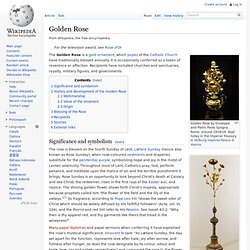
It is occasionally conferred as a token of reverence or affection. Recipients have included churches and sanctuaries, royalty, military figures, and governments. Significance and symbolism[edit] Golden Rose of Minucchio da Siena (1330), given by Pope John XXII to Rudolph III of Nidau, Earl of Neuchâtel Many papal diplomas and papal sermons when conferring it have explained the rose's mystical significance.
Portfolio - StuckInCustoms.com. Heather Jansch Sculptor Bronze & Driftwood Horse Sculpture for sale. Initial. A historiated illuminated initial In illuminated manuscripts, initials with images inside them, such as those illustrated here, are known as historiated initials.
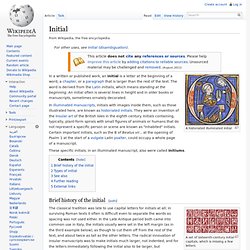
They were an invention of the Insular art of the British Isles in the eighth century. Initials containing, typically, plant-form spirals with small figures of animals or humans that do not represent a specific person or scene are known as "inhabited" initials. Illuminated manuscript. The decoration of this page from a French Book of Hours, ca.1400, includes a miniature, initials and borders The earliest surviving substantive illuminated manuscripts are from the period AD 400 to 600, initially produced in Italy and the Eastern Roman Empire.
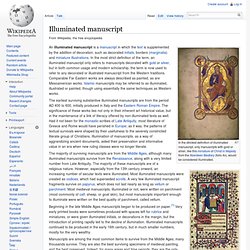
Codex Gigas. The Codex Gigas The Codex Gigas (English: Giant Book) is the largest extant medieval manuscript in the world.[1] It is also known as the Devil's Bible because of a large illustration of the devil on the inside and the legend surrounding its creation.

It is thought to have been created in the early 13th century in the Benedictine monastery of Podlažice in Bohemia (modern Czech Republic). It contains the Vulgate Bible as well as many historical documents all written in Latin. Book of hours. Book of hours, Paris c. 1410.
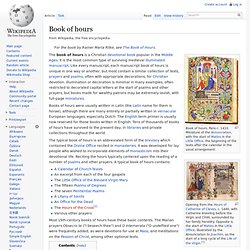
Miniature of the Annunciation, with the start of Matins in the Little Office, the beginning of the texts after the calendar in the usual arrangement. Books of hours were usually written in Latin (the Latin name for them is horae), although there are many entirely or partially written in vernacular European languages, especially Dutch. The English term primer is usually now reserved for those books written in English. Making Manuscripts. Calligraphy. Calligraphy (from Ancient Greek: κάλλος kallos "beauty" and γραφή graphẽ "writing") is a visual art related to writing.
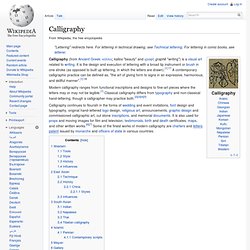
It is the design and execution of lettering with a broad tip instrument or brush in one stroke (as opposed to built up lettering, in which the letters are drawn).[1]:17 A contemporary calligraphic practice can be defined as, "the art of giving form to signs in an expressive, harmonious, and skillful manner".[1]:18 Modern calligraphy ranges from functional inscriptions and designs to fine-art pieces where the letters may or may not be legible.[1] Classical calligraphy differs from typography and non-classical hand-lettering, though a calligrapher may practice both.[2][3][4][5] Calligraphy continues to flourish in the forms of wedding and event invitations, font design and typography, original hand-lettered logo design, religious art, announcements, graphic design and commissioned calligraphic art, cut stone inscriptions, and memorial documents.
Western[edit]